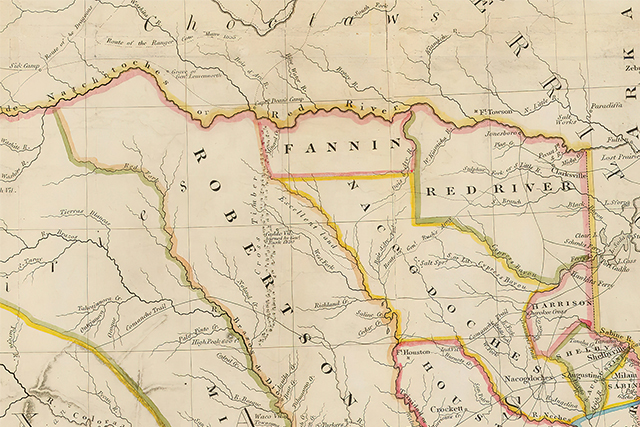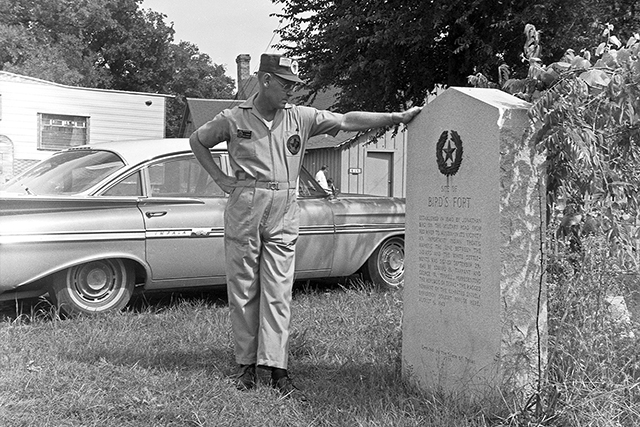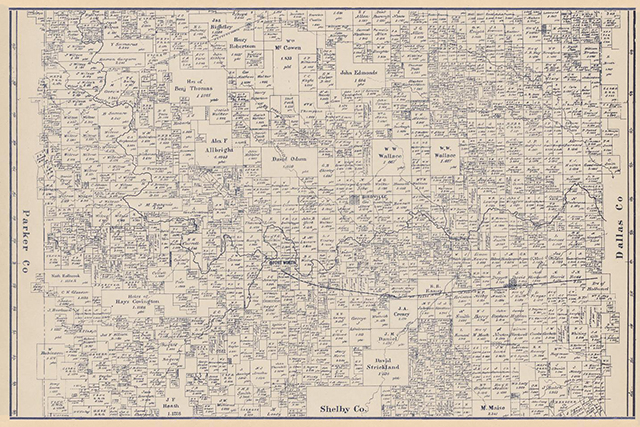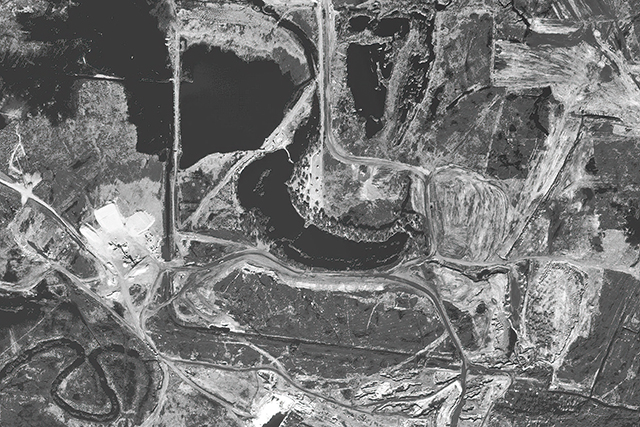In 1936 the State of Texas, through its Commission of Control for Centennial Celebrations, allocated two official historical markers for placing at sites in Tarrant County that are significant in the history of the Republic of Texas. One of the sites that received a Centennial marker... Read More
Alone in the Wilderness
The Birthplace of DFW
When the families of Bird's Fort abandoned their troubled settlement on the West Fork of the Trinity River in the spring of 1842, the place seemed destined to become no more than a miserable, inconsequential footnote in the area’s history. Instead, it became the spark that ignited the growth of a remote North Texas wilderness into the 4th largest metropolitan area in the United States. The DFW Metroplex was born at—and out of—Bird's Fort. This 111-acre parcel of land and water, now nestled peacefully within the Viridian community of North Arlington, is truly the last vestige of a time and place that pitted Anglo-American settlers against Native American tribes in a sequence of events that would set the course for the future of North Texas.
Unfortunately, the story of Bird's Fort and its shaping of today's Texas has received little recognition. Precious few reliable background materials have been available, and a high percentage of accounts found online or in print publications propagate a legacy of error and misrepresentation that ranges from minor inaccuracies to outright myths. In short, there's a high probability that whatever you've read about Bird's Fort is wrong.
It is the purpose of this website, then, to gather all available research materials into a comprehensive, searchable repository. Here, current and future historians can tap into those resources, consider the reliability of each, and begin to correct the record on the Lone Star State's most significant historic site north of the San Jacinto Battleground, the Alamo, and the State Capitol.
Repository: Essential Reading
The seventy men rode in the semblance of a military column through the north Texas prairie, the grass tall and still green from the spring rains. However, the men's clothing displayed no semblance... Read More
The early Anglo military campaigns into the three forks of the Trinity had hardly been decisive. But if they had intimidated the Indians at all, if they had compelled the warriors... Read More
The Beemans are the founding family of Dallas. An early journalist described Dallas in 1842: "Col. Bryan in his tent and Capt. Gilbert in his cabin, constitutes the City of Dallas ... and the 3 Beeman families the county... Read More
The beginnings of Tarrant County are closely associated with the life and work of Colonel Middleton Tate Johnson, the establishment of Bird's Fort, and to some extent with the colonization plans of the Peters Land Company... Read More
To all and singular to whom these presents shall come, Greeting: Whereas, a treaty of peace and friendship between the Republic of Texas and the Delaware, Chickasaw, Waco, Tah-woc-cany, Keechi, Caddo, Ana-dah-kah, Ionie, Biloxi, and Cherokee... Read More
Repository: Recent Additions
Firefighters had difficulty finding a fire in a remote area strewn with off-road trails Sunday afternoon. The blaze was quickly contained... Read More
Ah, the Perils of Pauline! I find myself in the midst of a historical controversy concerning the Marrow Bone Spring Marker. A student of mine, Mrs. Jeanne Jordan... Read More
The official transcribed Bird's Fort Treaty Ratification Proclamation as signed into law by Sam Houston on February 3, 1844 at Washington-on-the-Brazos... Read More
1994 archaeological survey report on the land surrounding the site of Bird's Fort... Read More
The Claude News (Claude, Tex.) article describing Sam Houston's encampment at Grapevine Springs while awaiting the treaty parley in late summer, 1843... Read More
Biographical entry for John Logan Bird, grand nephew of Jonathan Bird, from the book Bosque County: Land and People (A History of Bosque County, Texas), 1985... Read More













